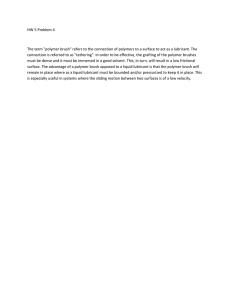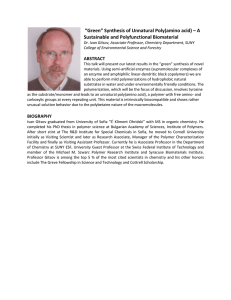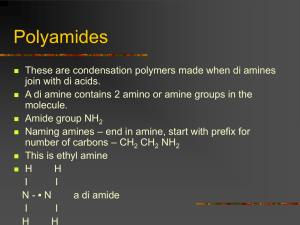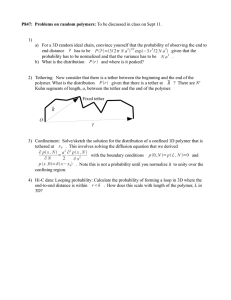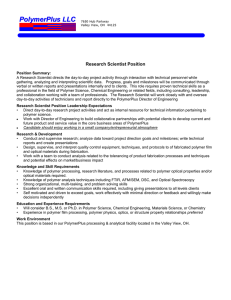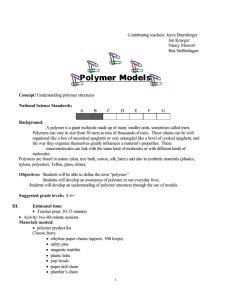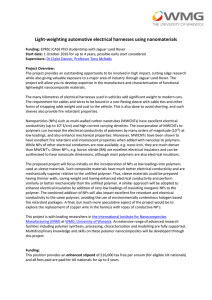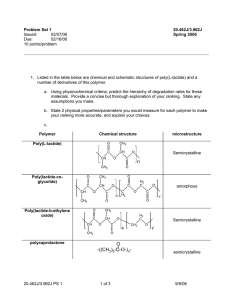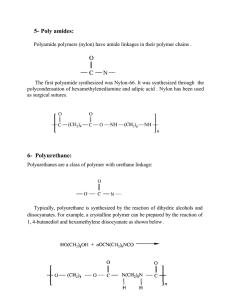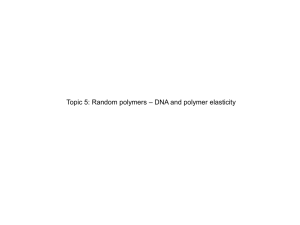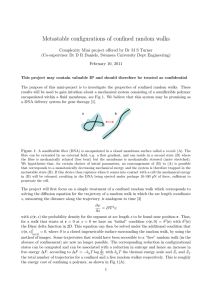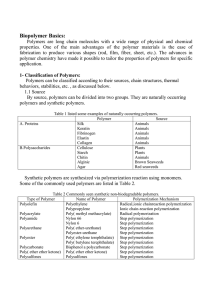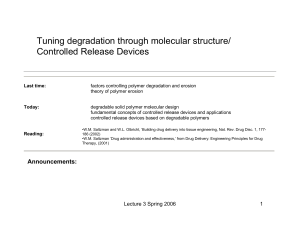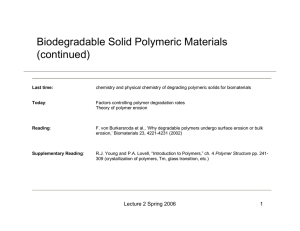– DNA and polymer elasticity Random polymers
advertisement
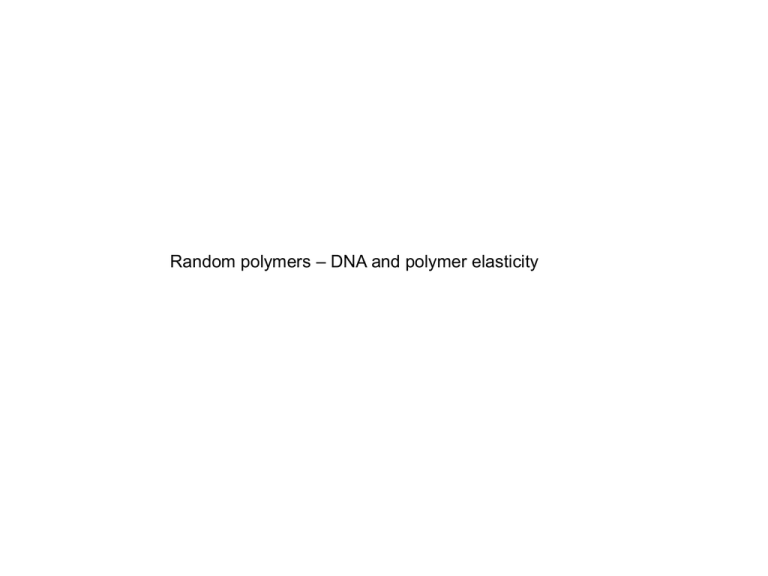
Random polymers – DNA and polymer elasticity Freely jointed chain Imagine a chain made up of links of size, a Each link can be oriented randomly Links do not interact – i.e. there is no self-avoidance all conformations have E = 0 Real biopolymers as freely jointed chains To discretize a real polymer into links, we consider ‘a’ to be the length over which the polymer is effectively rigid We’ll see that this can be defined exactly in terms of a measurable quantity called persistence length Sizes of genomes: Radius of gyration log-log plot slope = ½ so chromosomes are like random poly when they are free in solution Compare with E.coli size ~ 2 mm # of bp Distance between fluorescent markers Distance between fluorescent markers goes as random walk Tethering + Confinement: Distribution of distances between 2 fluorescently tagged loci ~ 100 kb apart Data is consistent with a tether existing between the two Tethering + Confinement: Location of Ori shows effects of confinement Measuring Looping Frequency What is probability of forming a loop in 3D for ideal polymer? p ~ L-3/2 Stretching a freely-jointed chain Optical Trap If we apply a force to a random polymer to stretch it, what will it’s force vs extension characteristic look like? Will it be like Hook’s law? Using an optical trap (or AFM) we can pull on DNA, proteins, RNA to measure how they stretch These experiments will allow us to determine the persistence length of these polymers directly at the single molecule level Pulling on a multidomain protein Our 1D random poly model 𝐿 𝐿𝑡𝑜𝑡 = 𝑁 𝑎 Worm-like chain WLC needed here ideal random poly does OK here

